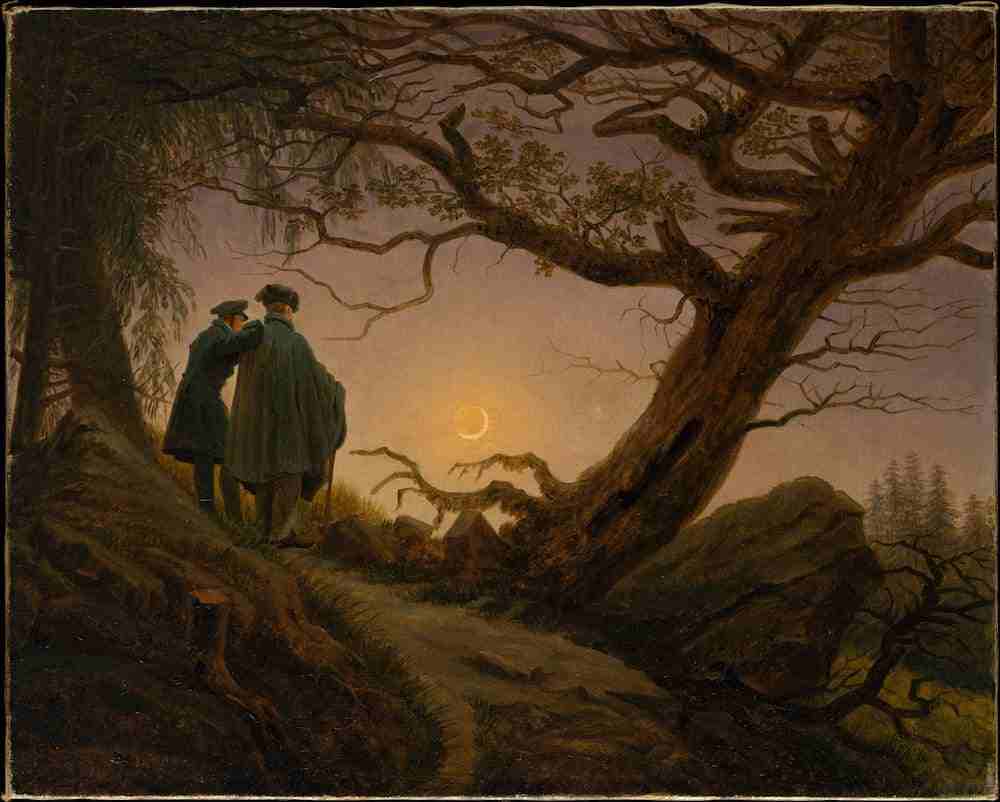Stream of consciousness and interior monologue are two modes of narration. They are similar, and in fact, both might be used within a single work.
What prompted these new modes of narration? Psychoanalysts Sigmund Freud and Carl Jung described the conscious ego as depending upon subconscious processes. Artists started to think pretty hard about this, and writers explored these new ideas via their fiction.
Interior Monologue
Interior monologue is a stylised way of thinking out loud. (Thinking ‘on the page’.)
Some people call it ‘internal’ monologue. This is the same thing.
Unlike stream-of-consciousness, an interior monologue can be integrated into a third-person narrative. The viewpoint character’s thoughts are woven into description, using the author’s own language.
This is the essential difference between interior monologue and straight narrative:
Straight Narrative
The narrator talking (You know ‘the narrator’ — that made-up character who sounds like the author — but please don’t mistake authors for narrators — not all authors are crazy axe-wielding, mentally unstable murderers, unlike many of their narrators.)
Interior Monologue
A character talking or thinking, using words specific to that character, making assumptions, mistaken judgements, conclusions RIGHT FOR THAT CHARACTER.
If interior monologue is done well, you won’t even notice it’s happening.
JAMES JOYCE’S NARRATION
First thing to know: focalisation is when the storyteller keeps narrative camera right next to the focal character’s head. Narration will mimic that character’s language and also their points of view.
James Joyce pioneered an original mode of narration, which we now describe as stream-of-consciousness. Joyce’s narration is basically a combination of focalisation and free indirect discourse (a.k.a. reported interior monologue) followed by a shift from third-person to first-person anrrative.
Ulysses is written using both stream of consciousness and interior monologue.
VIRGINIA WOOLF
Virginia Woolf is another author whose work is commonly described as ‘stream of consciousness’.
Woolf’s mode of narration is distinctive because her representation of the mind interweaves past and present. The following quotation describes how Virginia Woolf thought of time:
What is meant by “reality”? It would seem to be something very erratic, very undependable – now to be found in a dusty road, now in a scrap of newspaper in the street, now a daffodil in the sun… But whatever it touches, it fixes and makes permanent, that is, what remains over when the skin of the day has been cast into the hedge; that is what is left of past time and of our loves and hates. Now the writer, as I think, has the chance to live more than other people in the presence of this reality.
from A Room of One’s Own
In Mrs Dalloway, Virginia Woolf gives us an object and then lets the reader see it via the viewpoints of several different characters. This achieves what we might call literary parallax. Each character sees the object according to their own past experiences and the past is modified by their current state of mind. This is absolutely typical of Modernist writers, of which Virginia Woolf is the ‘purist’ example.
For an example of a work which starts off stream of consciousness then shifts to interior monologue, see Woolf’s The Waves. This novel comprises six polyphonous (many-voiced) sections of interrelated discourse.

Stream of Consciousness
Like interior monologue, stream-of-consciousness is another stylised way of thinking out loud.
It is the 19th and early 20th century version of what has become ‘free indirect style/speech’. (A style of third-person narration which uses some of the characteristics of third-person along with the essence of first-person direct speech.)
Stream-of-consciousness tends to read more like a pure soliloquy. (A famous soliloquy is Shakespeare’s To be or not to be.)
There’s a lot of interior monologue in stream-of-consciousness but the difference is, there’s no punctuation to mark it out as such.
The terms ‘stream-of-consciousness’ and ‘interior monologue’ are used interchangeably by some — but stream-of-consciousness refers more often to a first person narrative which mimics the jumble of thoughts, emotions and memories passing through a character’s mind. (That said, interior monologue is not necessarily written in first person.)
Stream-of-consciousness tends to be less ordered than interior monologue. That’s because consciousness has no beginning and no end — thoughts flit quite randomly from one thing to another.
Stream of consciousness is a regular feature of The Psychological Novel.
